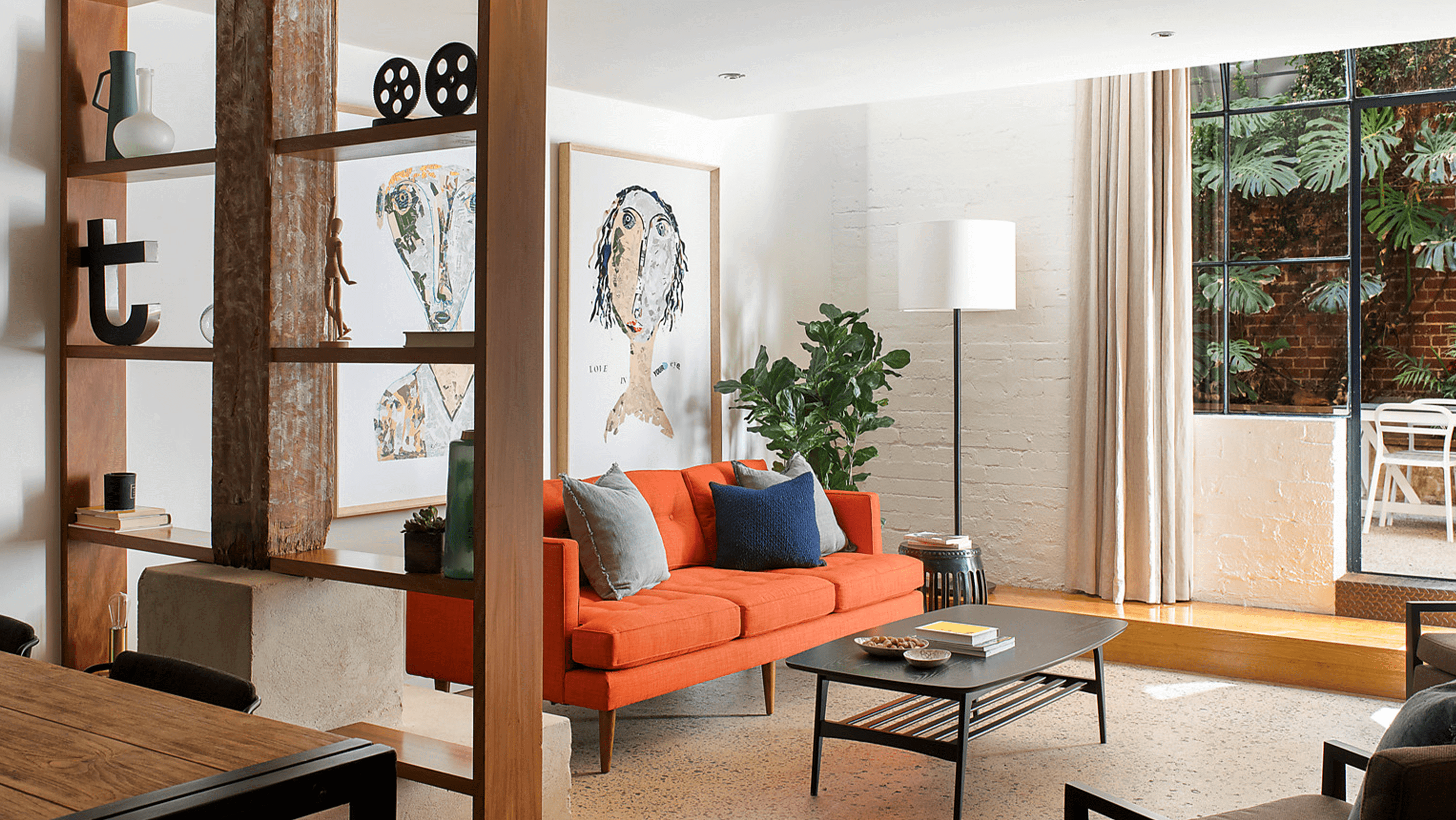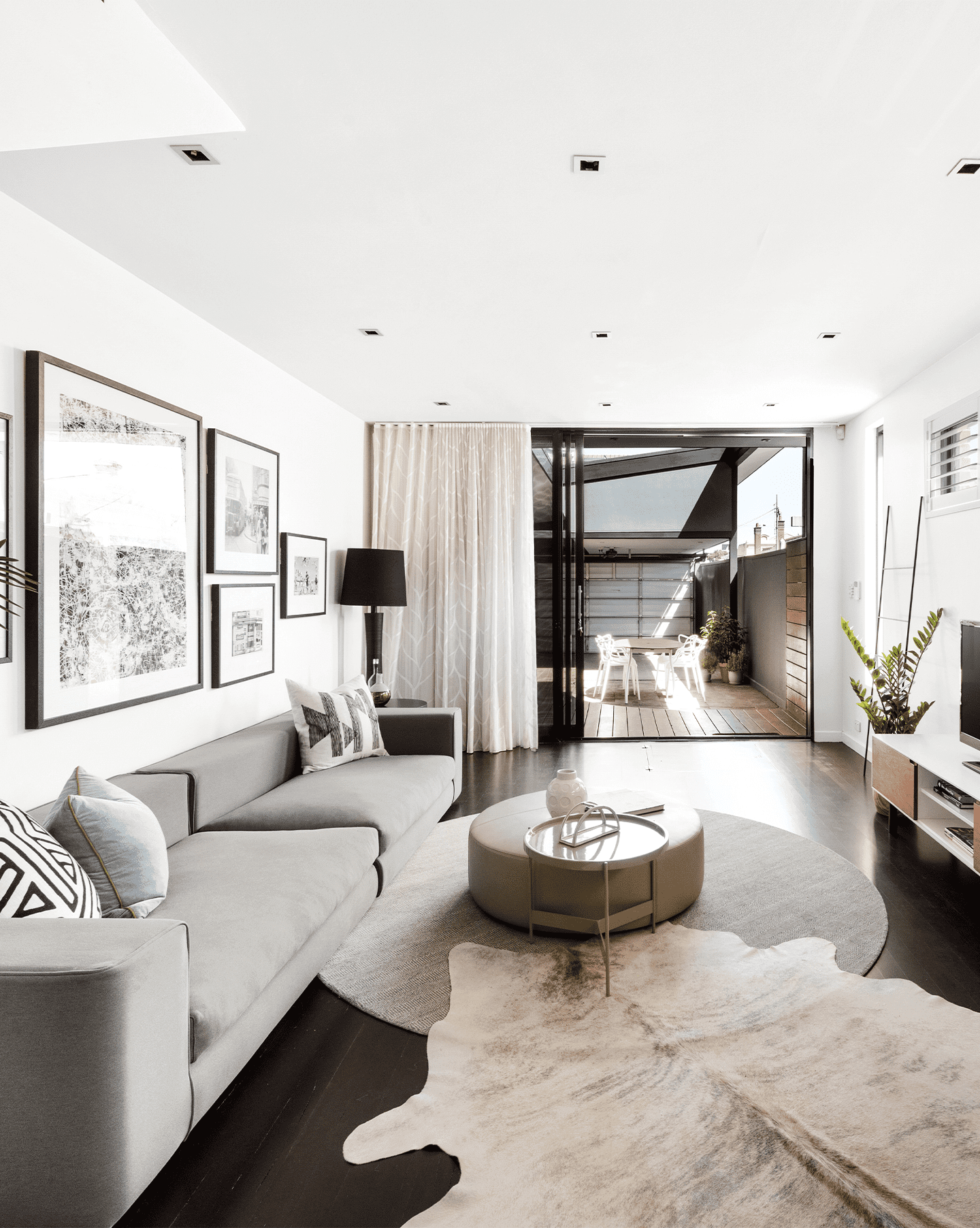Floor it
Let’s talk rugs, shall we? There are many ways to define a space, but in my humble (yet professional) opinion, rugs are the foundation of a well-designed room.

Rugs are the ultimate ‘quick-fix’ because, in a matter of minutes, you can transform a space by adding, rotating, changing, and/or layering rugs. Let me give you a few examples…
When working with a large open floor-plan, like a loft space or a single living/dining/kitchen space, there is no better way to divide and conquer than with rugs. The rug – and the placement of furniture in relation to the rug – provides division and definition of the space in a way that a wall does in a smaller room. Without the rugs, furniture tends to float in no man’s land – which is fine if you're after a minimalist look or have really beautiful floors you want to show off – but if you’re after a warmer atmosphere, then floor it, baby!
Like it or not, size matters. It is possible to make a room feel either larger or smaller depending on the rug you select. A really small rug in a large room, surrounded by big sofas or placed under a big dining table, can feel oddly proportioned and a bit skimpy, making the room feel smaller.
Similarly, if you have a large rug in a large space with large furniture and try to squish all the furniture within the rug's perimeter, what you end up doing is shrinking your usable living space. The furniture will look like it’s stranded on a remote island in the middle of a vast ocean.
Do yourself a favour and spread it out. If you have the space, use it. The sofas can even sit off the rug entirely, but the rug should be very close to the sofa or touching it to maintain a visual connection between the items in your space. The same ‘connection’ is created when the sofa sits partially on the rug. Trust me, just a simple 2-second tweak can completely change the way your space feels. This goes for chairs too, BTW!
One thing to note: you don’t want the sofa to be longer than the rug is wide. This creates a ‘top-heavy’ effect that looks out of balance. If you can turn the rug so the wider side sits under the entire sofa, then you’ve solved your problem in a flash without splashing more cash.
Ever questioned rugs on carpet? Well, me too. As a general rule, I don’t do it – you already have the carpet and the warmth it provides – HOWEVER, there is no hard and fast rule in my book when it comes to rugs (or anything, for that matter), but you have to know the rules to break them successfully.
Just as I would in a non-carpeted area, I’d use a rug on a carpet when a room is really large and/or serves more than one function. In this case, use rugs to create clear divisions of the space’s functionality. This is also good for cavernous bedrooms if you're looking for a bit more intimacy, or if you're renting and have horrible carpet!
If you're a free-flowing kind of person and don’t want to be defined by the linearity of a rectangular rug, or you have an unusually shaped space, I have answers for you too. Layering rugs is great if you love texture like I do (or are just really indecisive and can’t decide which rug to take home). Cowhides are also fantastic in many different interiors, from modern to contemporary to country and wintery lodge. The irregularity of their form allows for freedom in placement, as there are no right angles to define where you should place furniture.
Lastly, round rugs work really well in dining areas with round settings or large entryways with a round entry table. They can even work in living areas, where instead of a rectilinear furniture layout, you can follow the curve of the rug when placing the furniture, creating a cosy and intimate layout.







